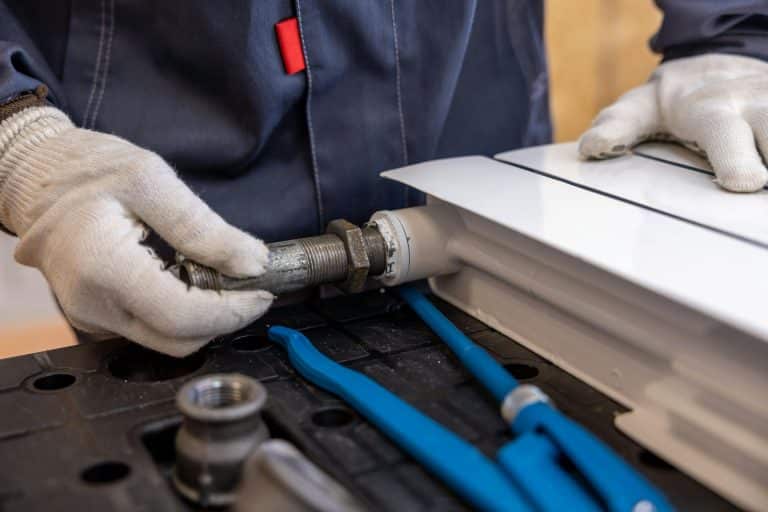Preventive maintenance often saves both time and money, but many people overlook the hidden systems beneath the ground or behind walls. Pipes can develop leaks, blockages, or cracks long before they show visible signs. Using a convenient pipe detector helps identify these issues early, reducing repair costs and avoiding sudden emergencies.
Pipe detectors make it possible to locate underground or hidden pipes without digging or damaging property. Tools like a pipe blockage detector can track problems in PVC, metal, or plastic pipes with precision, giving property owners a clear view of what needs attention. This practical approach makes routine maintenance easier and more effective.
By catching problems before they grow, pipe detectors support smoother operations in both homes and businesses. They provide accurate information that helps plan repairs and keep systems running longer without disruption.
Key Takeaways
- Pipe detectors make preventive maintenance easier and more cost-effective
- Early detection reduces repair needs and avoids sudden breakdowns
- Accurate insights support better long-term maintenance planning
Key Benefits of Using Pipe Detectors for Preventive Maintenance
Pipe detectors give property owners and maintenance teams practical tools to spot hidden issues, reduce repair costs, and keep plumbing systems safe and efficient. They make regular inspections easier and help prevent small problems like leaks or blockages from turning into larger disruptions.
Accurate Detection and Early Issue Identification
Pipe detectors allow maintenance teams to locate pipes and pinpoint problems without guesswork. By identifying the exact position and depth of a pipe, workers can avoid unnecessary digging or damage during inspections.
This accuracy helps detect leaks, cracks, and corrosion before they spread. Early detection supports preventive maintenance by giving a clear picture of the plumbing system’s condition.
For example, a detector can reveal small leaks that may not be visible on the surface. Addressing these issues quickly keeps water pressure steady and reduces the chance of costly pipe bursts.
Regular inspections with detectors also help track changes in the system over time. This makes it easier to spot patterns and schedule repairs before emergencies occur.
Cost Savings Through Non-Invasive Inspections
Traditional pipe inspections often require digging or breaking into walls, which adds labor and repair costs. Pipe detectors reduce the need for these disruptive methods by locating pipes and identifying issues without physical damage.
Non-invasive inspections mean fewer hours spent on unnecessary excavation. This lowers expenses for both property owners and maintenance crews.
A detector also helps prioritize repairs. By knowing exactly where a problem lies, teams can focus only on the affected section instead of replacing large portions of the system.
Over time, these savings add up. Preventive maintenance supported by detectors reduces emergency callouts and extends the lifespan of plumbing systems.
Enhanced Safety and Reduced Risk of Blockages
Blockages in pipes can lead to sewage backups, flooding, or contamination of clean water lines. Pipe detectors help identify areas where buildup is forming so maintenance crews can clear them before they cause larger problems.
Accurate mapping of underground or hidden pipes also reduces the risk of accidentally striking them during construction or repair work. This prevents damage that could lead to leaks or hazardous conditions.
Regular inspections with detectors improve safety for workers and residents. They limit exposure to harmful materials and minimize the chance of sudden failures that disrupt daily activities.
By reducing both blockages and accidental damage, detectors support safer and more dependable pipe maintenance practices.
How Pipe Detectors Support Predictive Maintenance Strategies
Pipe detectors make predictive maintenance more effective by helping identify hidden issues early and guiding decisions with measurable data. They also reduce wear on plumbing systems by preventing small problems from growing into major damage.
Data-Driven Insights for Maintenance Planning
Pipe detectors collect information on leaks, corrosion, and blockages that might not be visible during routine checks. This data allows maintenance teams to track patterns and predict when a plumbing system may need service.
Instead of waiting for a failure, technicians can schedule repairs based on actual conditions. This reduces sudden breakdowns and avoids shutting down water supply at inconvenient times.
Examples of insights gained include:
- Early leak detection before water damage spreads
- Corrosion mapping to see where pipes are weakening
- Flow rate changes that signal partial blockages
By using this information, maintenance planning becomes more accurate. Resources can be directed to the areas most at risk, which lowers costs and prevents unnecessary work.
Extending the Lifespan of Plumbing Systems
When small leaks and weak spots are detected early, pipes are less likely to fail under pressure. This prevents sudden bursts that can damage walls, floors, and connected equipment.
Regular use of pipe detectors helps keep plumbing systems in better condition over time. Repairs can be made before corrosion or buildup spreads further along the line.
Key benefits to system lifespan include:
- Reduced stress on older pipes
- Fewer emergency replacements
- Longer intervals between major repairs
By addressing issues before they grow, predictive maintenance supported by pipe detectors helps plumbing systems last longer and operate more efficiently.
Conclusion
Pipe detectors give maintenance teams a practical way to spot problems before they grow into costly repairs. By identifying leaks, blockages, or hidden pipe locations early, they help reduce downtime and prevent sudden failures.
They also support safer work conditions by lowering the chance of accidental damage during digging or construction. This makes them an effective tool for both safety and planning.
In the end, using pipe detectors as part of preventive maintenance saves time, cuts repair costs, and extends the life of plumbing and pipeline systems.













